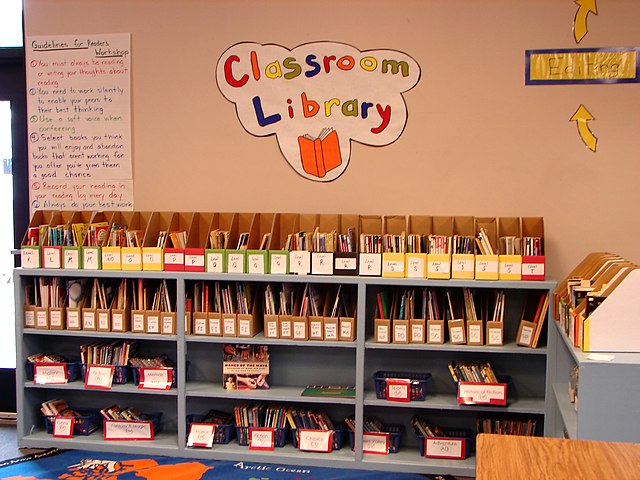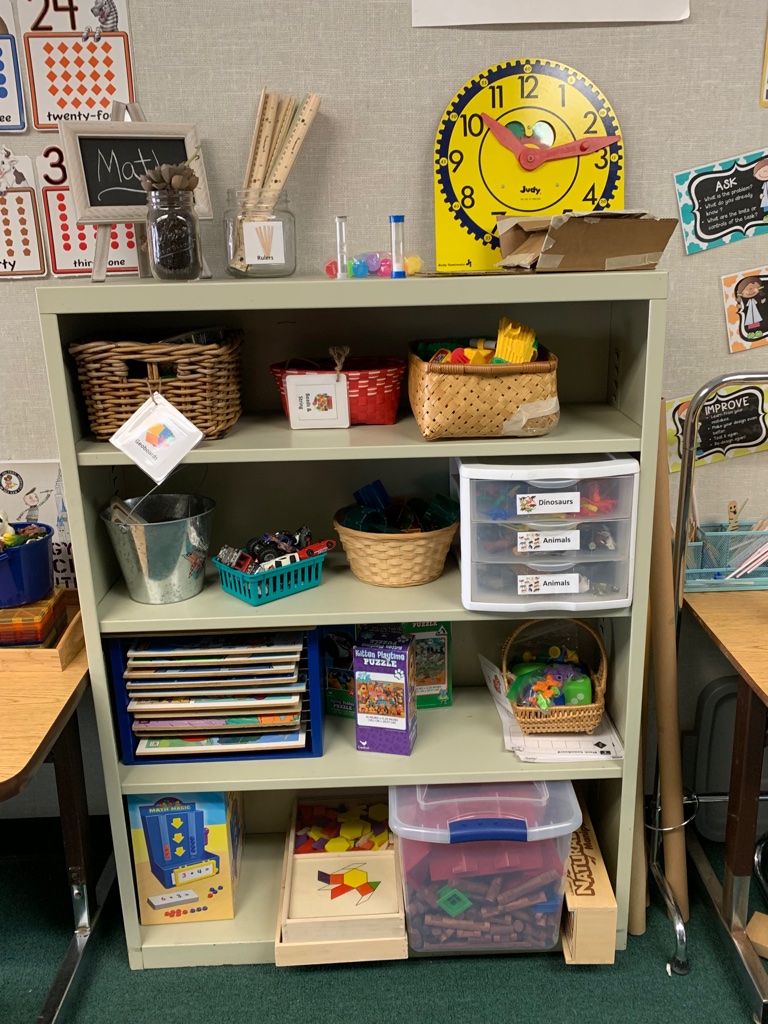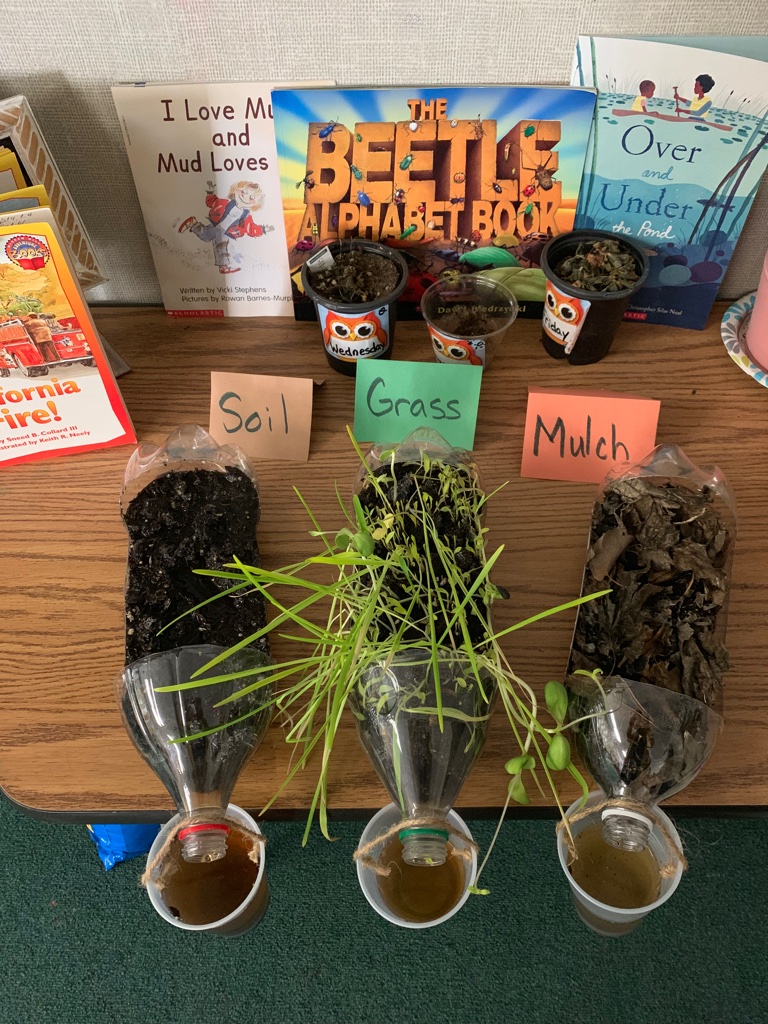10 Literacy, Math, and Science
How School Subjects Aid in Development
Tanessa Sanchez and Kerry Diaz
Learning Objectives
After completing this chapter, you should be able to:
Literacy, math, and science are foundational areas of learning that shape the academic success and future opportunities of school-age children. During this stage of development, children begin to build critical thinking skills, apply logic, and make meaningful connections between classroom learning and the world around them. A well-rounded curriculum in these core subjects not only supports cognitive growth but also nurtures curiosity, creativity, and confidence. This chapter explores how literacy, math, and science instruction can be developmentally appropriate, engaging, and inclusive, offering strategies and examples that help educators meet the diverse needs of learners in elementary and middle school classrooms.
Literacy
Phonics vs Whole Language Literacy Instruction
Phonics-based reading instruction and whole language instruction are two distinct approaches to teaching reading, each with its own emphasis and methodology. Phonics-based instruction focuses on teaching the relationship between letters and their sounds (graphemes and phonemes) as a foundational skill for reading. This method emphasizes decoding, or sounding out words, by breaking them into smaller phonetic components. The goal is for students to learn to decode unfamiliar words by recognizing letter patterns and applying phonetic rules. Phonics instruction is often systematic and structured, with students progressing through a sequence of steps that increase in complexity. It is grounded in the belief that understanding how sounds correlate with written symbols is essential for building strong reading skills, particularly for early readers and those with reading difficulties.
In contrast, whole language instruction emphasizes the idea that reading should be learned in the context of meaningful language use, rather than focusing on isolated skills like phonics. This approach encourages students to recognize words as whole units and promotes reading through immersion in rich, authentic texts. Whole language instruction relies on context clues, picture cues, and the overall meaning of a text to help children understand and learn new words. It supports the view that reading should be a natural process, similar to how children learn to speak, through exposure to language in a context-rich environment. While whole language places less emphasis on direct phonics instruction, it encourages students to engage in reading for meaning and to develop comprehension skills in parallel. Advocates of whole language believe that reading should be enjoyable and integrated with writing and speaking to develop a full understanding of language.
Basics of Literacy Instruction
Effective reading instruction incorporates several key components that work together to develop a child’s reading skills. One of the most essential components is phonemic awareness, which is the ability to recognize and manipulate the individual sounds (phonemes) in spoken words. Phonemic awareness is foundational to reading because it enables children to decode words and understand that words are made up of distinct sounds. This skill is often developed through activities such as rhyming, segmenting words into sounds, and blending sounds to form words. Phonemic awareness is typically taught before children begin learning to read with written text, as it prepares them to understand the relationship between sounds and letters.
Another critical component of reading instruction is phonics. Phonics involves teaching children the relationship between letters (graphemes) and their corresponding sounds (phonemes). It helps children understand how to decode or sound out words when they encounter unfamiliar text. Phonics instruction includes teaching letter-sound relationships, common spelling patterns, and rules for word decoding. As children learn these skills, they can apply their knowledge to recognize familiar words and decode new ones, which is essential for building reading fluency. Phonics instruction is often systematic and explicit, with teachers guiding students step by step through increasingly complex word patterns.
In addition to phonemic awareness and phonics, fluency is another important component of reading instruction. Fluency refers to the ability to read a text smoothly, quickly, and with appropriate expression. Fluent readers recognize words automatically, which allows them to focus their attention on understanding the meaning of the text rather than struggling to decode words. Developing fluency involves repeated practice with reading familiar texts, allowing students to gain confidence and speed in their reading. Teachers often use techniques such as guided reading, repeated reading, and read-aloud sessions to help students improve their fluency. Fluency is closely linked to comprehension, as fluent readers are better able to retain and understand what they read.
Vocabulary development is another critical element in effective reading instruction. A strong vocabulary allows children to understand and interpret the meaning of texts more easily. Vocabulary instruction can be integrated into reading lessons by introducing new words in context and encouraging children to use these words in their own speaking and writing. Teachers often use strategies such as word walls, contextual analysis, and morphological awareness (understanding prefixes, suffixes, and root words) to support vocabulary growth. A rich vocabulary enhances reading comprehension, as it enables students to understand more complex ideas and connect the text to their prior knowledge.
Finally, reading comprehension is the ultimate goal of reading instruction. Comprehension involves the ability to understand, interpret, and analyze what is read. It requires the integration of many skills, including decoding, fluency, vocabulary knowledge, and the ability to make inferences and draw conclusions. Comprehension instruction often includes teaching strategies such as predicting, questioning, summarizing, and making connections to help students engage with the text. Teachers can encourage comprehension by asking open-ended questions, prompting discussions, and guiding students to reflect on the text’s themes and meaning. By focusing on these key components—phonemic awareness, phonics, fluency, vocabulary, and comprehension—teachers can provide students with the necessary skills to become proficient, confident readers.
Self-Selected Reading

library.
Self-selected reading is a literacy practice that allows students to choose their own books based on their interests, reading levels, and personal preferences. This approach encourages a love for reading by giving students autonomy, fostering motivation, and promoting engagement with texts that feel meaningful to them. Self-selected reading supports fluency, vocabulary development, and comprehension skills, as students are more likely to be invested in books they find enjoyable. Additionally, it aligns with reader-response theory, which suggests that personal connections to a text enhance understanding and retention. Teachers can support self-selected reading by providing a diverse classroom library, setting aside dedicated independent reading time, and discussing books with students to guide their choices while ensuring they are appropriately challenging. This method not only improves literacy skills but also builds lifelong reading habits.
Math Instruction
Effective math instruction encompasses various strategies and components that work together to build a strong mathematical foundation for students. One of the core components of math instruction is computation, which involves teaching students to perform mathematical operations such as addition, subtraction, multiplication, and division accurately. Computation skills are fundamental for students to succeed in more complex mathematical concepts, and these skills are typically developed through repeated practice and reinforcement. Teachers often use structured activities and drills to help students become proficient in computational skills, while also ensuring that they understand the underlying concepts behind these operations, rather than simply memorizing procedures. Mastery of computation is essential for students to solve problems efficiently and with confidence.
In addition to computation, problem-solving is a critical component of math instruction. Problem-solving involves applying mathematical concepts and skills to find solutions to real-world problems. It encourages students to think critically, reason logically, and explore multiple strategies for finding a solution. Problem-solving in math can range from word problems that require the application of operations to more complex, open-ended questions that require creative thinking. Teachers help students develop problem-solving skills by encouraging them to break problems into smaller, manageable parts, identify relevant information, and choose the best strategy to approach the solution. Effective problem-solving instruction also includes teaching students to check their work, evaluate their solutions, and consider alternative methods of solving the problem.

To support both computation and problem-solving, math manipulatives are powerful tools that can enhance students’ understanding of abstract concepts by providing hands-on, concrete representations of mathematical ideas. Manipulatives include objects such as base-ten blocks, fraction strips, counting bears, and pattern blocks that allow students to visually and physically manipulate mathematical concepts. For example, base-ten blocks help students understand place value, while fraction strips provide a tactile way for students to grasp fractional relationships. Using manipulatives helps students visualize math problems, making abstract concepts more concrete and accessible. These tools also provide opportunities for interactive learning and collaboration, as students can work together to solve problems and explore mathematical relationships through hands-on activities.
Drawing is another effective strategy that supports math instruction, particularly when it comes to visualizing mathematical concepts. Drawing diagrams, charts, and graphs allows students to represent mathematical problems in a visual format, helping them organize information and understand relationships between different elements. For example, when solving geometry problems, students may draw shapes and label their parts to better understand the properties of the figures. In algebra, graphing equations helps students see the relationship between variables. Drawing can also be used in problem-solving to map out a plan or break down a complex problem into more manageable steps. Teachers encourage students to incorporate drawing as a method of thinking through mathematical concepts, as it helps to deepen understanding and reinforce learning.
Finally, effective math instruction involves a balance of conceptual understanding, procedural fluency, and application. While computation and problem-solving are central to math learning, students must also understand the underlying concepts behind mathematical operations. Teachers encourage this understanding by making math relevant to students’ everyday lives, using real-world examples to show how math is applied in various contexts. By integrating math manipulatives, problem-solving strategies, and visual aids like drawing, math instruction becomes a dynamic process that fosters a deeper understanding of mathematical concepts. A well-rounded math curriculum that incorporates these elements helps students develop both the skills and the confidence to tackle increasingly complex mathematical challenges.
Science Instruction

Science instruction plays a crucial role in developing students’ understanding of the natural world and cultivating critical thinking skills. At its core, science education encourages curiosity, exploration, and inquiry, allowing students to ask questions, conduct experiments, and analyze evidence. Effective science instruction often involves a hands-on, inquiry-based approach where students are actively engaged in learning through experiments, observations, and data collection. By exploring scientific concepts through practical activities, students develop a deeper understanding of the material, which helps them connect theoretical knowledge to real-world applications. Teachers can foster a learning environment where students feel empowered to explore scientific phenomena, ask questions, and develop hypotheses that they can test through experimentation.
In addition to inquiry-based learning, effective science instruction incorporates the scientific method, which provides students with a structured approach to investigating questions and solving problems. The scientific method involves several key steps: making observations, asking questions, forming hypotheses, conducting experiments, analyzing results, and drawing conclusions. By guiding students through these steps, teachers help them develop a systematic way of thinking and problem-solving that can be applied not only in science but in other areas of learning and life. It also fosters skills such as critical thinking, observation, analysis, and communication, which are essential for students’ overall intellectual development. Science instruction at the elementary and middle school levels often includes a focus on key concepts in areas like biology, chemistry, physics, and earth science, giving students a broad understanding of scientific principles.
STEM (Science, Technology, Engineering, and Math) education is increasingly integrated into science instruction, emphasizing the connections between these fields and encouraging students to see the real-world applications of science. Through STEM projects, students engage in collaborative problem-solving, design experiments, and build prototypes that illustrate scientific concepts in a tangible way. This interdisciplinary approach enhances students’ ability to think critically and apply their learning to solve real-world challenges. Additionally, incorporating technology into science instruction—such as using simulations, interactive tools, and digital data analysis—can further engage students and allow them to explore complex concepts in an interactive, accessible way. By blending hands-on experiments, scientific inquiry, and technological tools, science instruction helps students develop the skills they need to succeed in an increasingly science- and technology-driven world.
Conclusion
Strong literacy, math, and science instruction during the school-age years lays the groundwork for lifelong learning and academic achievement. By integrating hands-on experiences, real-world applications, and developmentally appropriate strategies, educators can foster curiosity, problem-solving, and critical thinking across all three subject areas. When these disciplines are taught in ways that are engaging, inclusive, and connected to students’ everyday lives, children are more likely to develop the confidence and skills they need to succeed in school and beyond. As we support school-age learners in mastering foundational concepts, we also empower them to become thoughtful, capable, and curious participants in an ever-changing world.
Resources
- American Association for the Advancement of Science (AAAS). (1993). Benchmarks for Science Literacy: Project 2061. Oxford University Press.
- Beichner, R., & Saul, J. M. (2003). Teaching Science Through Inquiry: Promoting Active Learning.
- Boaler, J. (2016). Mathematical Mindsets: Unleashing Students’ Potential through Creative Math, Inspiring Messages, and Innovative Teaching. Jossey-Bass.
- Bransford, J. D., Brown, A. L., & Cocking, R. R. (2000). How People Learn: Brain, Mind, Experience, and School. National Academies Press.
- Common Core State Standards Initiative (CCSSI). (2010). Common Core State Standards for Mathematics.
- Cunningham, P. M., & Allington, R. L. (2017). Classroom Literacy Assessment: Making Sense of What Students Know and Do. Pearson.
- The Department of Education (U.S.). (2009). Mathematics Instruction for Students with Learning Disabilities: A Review of the Literature.
- Gould, L. P., & Goodman, K. S. (2014). Whole Language and Literacy Instruction: An Integrated Approach.
- Fountas, I. C., & Pinnell, G. S. (2017). Leveled Literacy Intervention: The Fountas & Pinnell System. Heinemann.
- International Literacy Association (ILA). (2018). Standards for the Preparation of Literacy Professionals.
- National Council of Teachers of Mathematics (NCTM). (2000). Principles and Standards for School Mathematics.
- National Reading Panel (NRP). (2000). Teaching Children to Read: An Evidence-Based Assessment of the Scientific Research Literature on Reading and Its Implications for Reading Instruction.
- National Research Council. (2000). Inquiry and the National Science Education Standards: A Guide for Teaching and Learning. National Academy Press.
- National Science Teachers Association (NSTA). (2018). The NGSS (Next Generation Science Standards) and Science Instruction.
- Moore, D. W., Bean, R. M., Birdyshaw, D., & Rycik, J. A. (1999). Adolescent Literacy: A Position Statement. International Reading Association.
- Pearson, P. D., & Gallagher, D. J. (1983). The Instruction of Reading Comprehension. Journal of Educational Psychology, 75(3), 521-531.
- Schoenfeld, A. H. (2007). Assessing Mathematical Proficiency. Cambridge University Press.
- Van de Walle, J. A., Karp, K. S., & Bay-Williams, J. M. (2013). Elementary and Middle School Mathematics: Teaching Developmentally. Pearson.
Media Attributions
- ClassroomLibrary © popofatticus / Rob from Cambridge, MA, USA, CC BY 2.0 adapted by Chiewatc is licensed under a CC0 (Creative Commons Zero) license
- F07688AB-93BB-4A3C-9F03-A89C9C6D89B8_1_105_c is licensed under a Public Domain license
- F9B24FC5-C56D-4E0E-8DB8-D73C27F81422_1_105_c © Tanessa Sanchez is licensed under a Public Domain license

